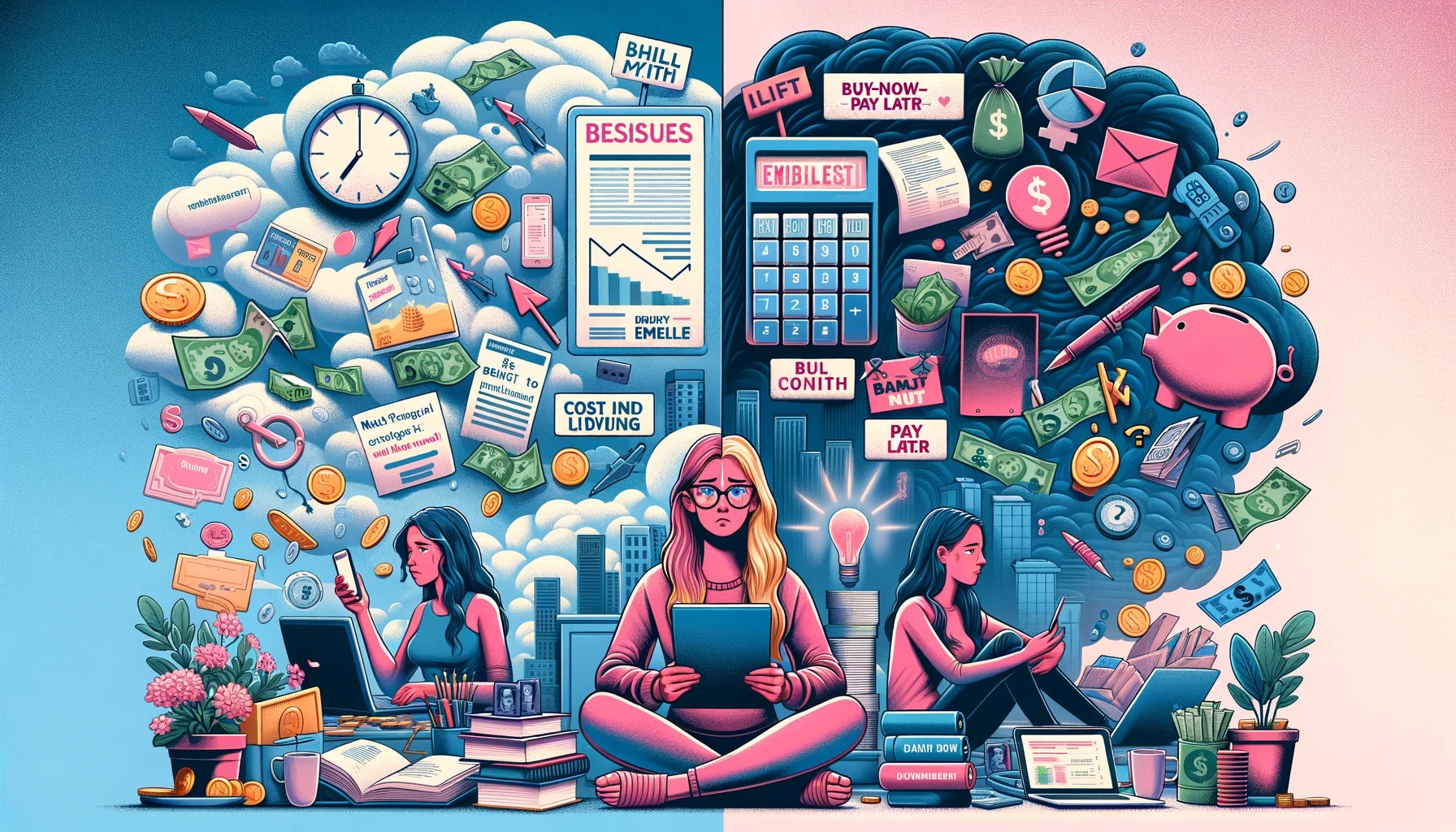Invest
The trends driving consumer change in 2022
Global research has provided insight into the top consumer trends for the 2022 calendar year.
The trends driving consumer change in 2022
Global research has provided insight into the top consumer trends for the 2022 calendar year.

Euromonitor International has rolled out its Top 10 Global Consumer Trends 2022 report this month, giving a picture of the emerging and fast-moving trends that are expected to gain traction in the year ahead.
Climate-conscious behaviour
Among the trends highlighted is a growing number of “climate changes”. These, the report flagged, will be critical for companies to address head-on.
“Green activism and low-carbon lifestyles are here to stay. Consumers expect brands to step up and are taking action through the products they purchase as concerns over the climate emergency escalate,” the report noted.

“To win over Climate Changers, companies should offer products that are carbon footprint certified. Transparent labelling of carbon-neutral products builds trust and enables consumers to make informed choices.”
The report found that 78 per cent of professionals think that climate change will impact consumer demand, changing behaviours, needs and preferences.
“Millennials and Generation Z, especially, feel they can make a difference through their choices. This largest spending cohort of the future will use tools to ensure minimal climate impact. The more offerings that align with expectations of Climate Changers, the more brands will see their products and services resonate,” it said.
Digitally savvy seniors
The pandemic has seen an influx of seniors becoming better acquainted with technology, with 45 per cent of consumers aged 60+ now using a banking service on mobile at least once a week. A further 82 per cent of consumers aged 60+ owned a smartphone in 2021, the report flagged, noting that a rise in digitally savvy seniors is set to continue in 2022.
“Older consumers were forced online as the world shut down. Now, familiar and comfortable with technology, Digital Seniors are empowered to make purchases and use services through this channel. Businesses have an opportunity to tailor their digital experience to target and meet the needs of this expanded online audience,” the report said.
“The global population aged 60+ will grow 65 per cent from 2021 to 2040, reaching over two billion people. This relatively wealthy cohort is gaining more experience and confidence using online services and choosing to adopt more tech solutions that assist with their daily lives.
“Alongside browsing and shopping online, Digital Seniors embrace virtual solutions for socialising, health screenings, finances and learning. TikTok is one platform these consumers use, as a result of their digitally native grandchildren influencing and empowering them to be on social media.
“In fact, over 60 per cent of consumers aged 60+ visited a social networking website at least once a week, whilst 21 per cent took part in video gaming weekly.”
Financially focused
Another key trend impacting consumers this year will be the continuation of people becoming greater aware of their finances and what they can do with them, the report found.
“Consumers are gaining confidence in investing and becoming savvy savers to strengthen financial security. Financial Aficionados take control of their money and use services to track their transactions. Financial literacy is no longer restricted to Wall Street. Companies should provide tools and easy-to-use solutions to make any consumer feel financially empowered,” the report said.
According to the report, 51 per cent of consumers believe they will be better off financially in the next five years.
“The banked population across emerging and developed countries continues to increase, giving consumers access to money management tools. Businesses are capitalising on this newfound financial freedom and are responding with resources that give consumers more control and confidence,” the report said.
“There has been an influx of consumer-friendly retail trading platforms for Financial Aficionados to invest their money in the stock market. Fintech startups are providing digital banking services with lower fees and higher interest rates to the unbanked and financially underserved.
“Offering educational resources within these platforms can help build consumer confidence and brand trust. Companies are also capitalising on the growth of cryptocurrencies as an alternative payment method.”
‘The Metaverse Movement’
Simulated, 3D digital ecosystems of the future will become a key focus area for consumers in 2022 and beyond, the report said, flagging that 38 per cent of consumers took part in online video gaming at least weekly in 2021. This figure is up from 29 per cent in 2015.
“The digital world is evolving beyond virtual hangouts to immersive 3D realities,” it explained.
“Consumers are embracing these digital spaces to socialise with communities. Brands at the centre of The Metaverse Movement can build equity. These immersive environments can drive e-commerce and virtual product sales as access expands.”
Further, the report noted that finding a digital identity has become more important for consumers off the back of lockdowns spurred by the pandemic.
“Physical and virtual worlds collided last year. With strict social distancing requirements, consumers learned how to stay connected, forming new online communities that offer a range of interactivity, from livestreaming to gaming,” it said.
“Social networks are advancing their capabilities, and in some cases, acquiring tech startups, to enter The Metaverse Movement.
“The constant stream of content and ability to go viral on video-dominant social platforms like TikTok and YouTube showcase the influence of community-based networks. Now, online socialisation is the preferred form of entertainment for many consumers, particularly younger generations, who spend more time playing games on mobile, desktop and AR / VR headsets.
“During The Metaverse Movement, consumers will outfit their avatars to explore virtual worlds alongside users from across the globe. The prevalence of shared, 3D virtual spaces will characterise a future rendition of the internet.”

Spending
Moneysmart study reveals Gen Z women more concerned about finances than men
A new research conducted by ASIC’s Moneysmart has unveiled the heightened levels of stress and concern regarding finances and the cost of living among Australian Gen Z women compared to their male ...Read more

Spending
The cost of politeness: Aussies out of pocket by $1,350 due to 'awkward tax'
It's the time of year when Australians dive into their pockets for festive events and gatherings, yet a recent study by PayPal suggests that many are too polite, or perhaps too embarrassed, to ask for ...Read more

Spending
Aussies can ‘NAB Now Pay Later’ with the last major bank to embrace BNPL
NAB has become the latest bank to enter the BNPL market. Read more

Spending
Aussie households spent $368 a week on transport after petrol price surge
Fuel costs have increased by 40 per cent over the past year, a new report from the Australian Automobile Association has revealed. Read more

Spending
Voters say reducing the cost of living should be the government’s top priority
Aussies have ranked high cost of living as the top issue that needs to be addressed by the next government. Read more

Spending
Bodies back Labor’s commitment to stronger BNPL regulation
All parties should commit to stronger regulations for the BNPL sector, according to Financial Counselling Australia. Read more

Spending
Household spending surges led by retail and recreation
Spending on retail, recreation and hospitality have continued to climb as COVID-19 case numbers and restrictions have eased. Read more

Spending
Banks extend financial assistance to flood-affected customers
A range of assistance is available from major banks to those impacted by flooding in NSW and Queensland. Read more

Spending
Moneysmart study reveals Gen Z women more concerned about finances than men
A new research conducted by ASIC’s Moneysmart has unveiled the heightened levels of stress and concern regarding finances and the cost of living among Australian Gen Z women compared to their male ...Read more

Spending
The cost of politeness: Aussies out of pocket by $1,350 due to 'awkward tax'
It's the time of year when Australians dive into their pockets for festive events and gatherings, yet a recent study by PayPal suggests that many are too polite, or perhaps too embarrassed, to ask for ...Read more

Spending
Aussies can ‘NAB Now Pay Later’ with the last major bank to embrace BNPL
NAB has become the latest bank to enter the BNPL market. Read more

Spending
Aussie households spent $368 a week on transport after petrol price surge
Fuel costs have increased by 40 per cent over the past year, a new report from the Australian Automobile Association has revealed. Read more

Spending
Voters say reducing the cost of living should be the government’s top priority
Aussies have ranked high cost of living as the top issue that needs to be addressed by the next government. Read more

Spending
Bodies back Labor’s commitment to stronger BNPL regulation
All parties should commit to stronger regulations for the BNPL sector, according to Financial Counselling Australia. Read more

Spending
Household spending surges led by retail and recreation
Spending on retail, recreation and hospitality have continued to climb as COVID-19 case numbers and restrictions have eased. Read more

Spending
Banks extend financial assistance to flood-affected customers
A range of assistance is available from major banks to those impacted by flooding in NSW and Queensland. Read more







